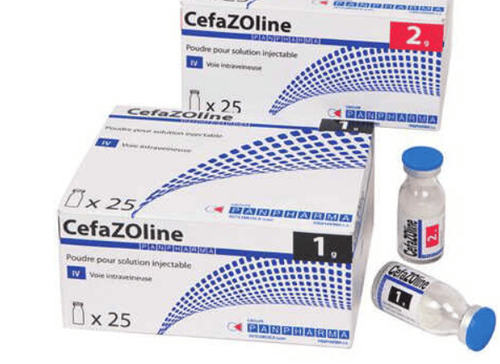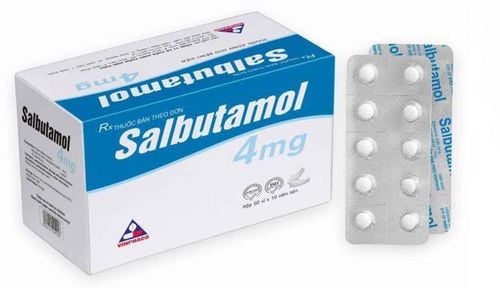This is an automatically translated article.
Prascal is one of the drugs containing Ceftazidime that is used quite commonly today. The drug has a broad antibacterial spectrum, effective against many different groups of pathogenic bacteria. The drug can be transmitted through the placenta and secreted into breast milk, so it should be used with caution in pregnant or lactating women.
1. What is Prascal?
Prascal belongs to the group of drugs used to treat parasites, having both anti-infective and antiviral and antifungal effects.The main ingredient of Prascal contains Ceftazidime 1g. In Prascal, Ceftazidime exists as Ceftazidime pentahydrate. Ceftazidime is a 3rd generation cephalosporin antibiotic. The drug is not absorbed from the gastrointestinal tract, so it is only available as an infusion.
When entering the body, Ceftazidime is not metabolized, about 80 to 90% of the dose will be excreted in the urine, a small part is excreted in the bile.
Ceftazidime can cross the placenta and secreted into breast milk.`
Ceftazidime has the ability to inhibit enzyme synthesis on bacterial cell walls, thereby giving a strong bactericidal effect. The drug is sensitive to a relatively wide range of Gram-negative bacteria that are resistant to Aminoglycosides, and Gram-positive bacteria that are resistant to Ampicillin. The drug is effective against both aerobic gram-negative bacteria and some anaerobic gram-positive bacteria.
Currently, resistance to Ceftazidime has occurred is also relatively common in clinical practice, mainly due to the loss of beta-lactamase inhibitory effect.
Ceftazidime is indicated in the treatment of diseases such as:
Sepsis. Group of respiratory diseases: Bronchiolitis, bronchitis, bronchiectasis, pneumonia, lung abscess or other lung infections. Ear, nose and throat diseases: otitis media, sinusitis. Gastrointestinal pathology: Purulent cholecystitis, colitis, peritonitis, appendicitis ... Urinary kidney disease: pyelonephritis, prostatitis, ureteritis, cystitis , urethritis. Some skin diseases such as skin ulcers, burns with skin lesions... In addition, the drug is also used in the treatment of other inflammatory diseases such as myelitis, osteoarthritis, osteomyelitis, encephalitis.. Treatment of severe infections in people with underlying diseases with impaired blood-related immune function. Treatment of infections associated with peritoneal dialysis.
2. What does Prascal do?
The main use of Prascal is to kill bacteria, so it works very well in the treatment of infectious diseases.
Indications to use Prascal in the following cases:
Patients with lower respiratory tract infections. Patients with urinary tract infections include patients with or without complications. Gynecological inflammatory diseases. Treatment of infections of the skin or skin structures, intra-abdominal infections and central nervous system infections including meningitis. The drug is contraindicated in the following cases:
Patients with a history of allergy or hypersensitivity to any ingredient of the drug. Patients with a history of hypersensitivity to other drugs in the Cephalosporin class.
3. Dosage and usage of Prascal
Prascal is produced in the form of a powder for injection, boxed with 10 vials of powder in each box.
Prascal is used in the form of intravenous infusion or deep intramuscular injection. For patients with deep intramuscular injection, the injection is usually given into the upper quadrant of the buttocks or the lateral part of the left or right thigh.
The way to mix each drug is different, specifically:
For solution for intramuscular injection: Mix 1g Ceftazidime 1g with 3ml distilled water for injection or 0.5%, 1% Lidocaine hydrochloride solution. For intravenous solution: Mix 1g of the drug with 3ml of distilled water for injection or 0.9% sodium chloride infusion solution or 5% Dextrose solution. The form of solution for infusion is similar to that for intravenous injection but the ratio is different. It is recommended that 1-2g of the drug be mixed into 100ml of solution for injection. Specific dosage for each case:
In adults: 1g dose/time can be repeated after 8 hours or 2g dose/time, each time 12 hours apart. If the patient has a history of and is being treated for impaired liver function, this dose can still be used without dose adjustment. In patients with renal impairment, the use of Prascal should be based on the creatinine clearance index: When the creatinine clearance is between 50 and 31 ml/min, give 1g injection once every 12 hours. When creatinine clearance is in the range of 30 to 16 ml/min, the dose is 1 g/time, 24 hours apart. When creatinine clearance is between 15 and 6 ml/min, the dose should be reduced to 500 mg/time, 24 hours apart. In case of less than 5 ml/min, inject 500mg/time, but each time is 48 hours apart. In infants from 0 to 4 months of age: 30 mg/kg body weight, intravenously every 12 hours. Children from 1 to 12 months old: 30-50mg/kg body weight, intravenously not more than 6g/day, each dose is 8 hours apart. Elderly people, especially people over 70 years old, use up to 3g/day.
4. Side effects of the drug Prascal
Some possible undesirable effects of Prascal:
Local: Expression of swelling and pain right at the injection site, can be hot and red depending on the location of each person. There may be situations such as hypersensitivity reactions to the components of the drug. Digestive disorders cause diarrhea, nausea, vomiting accompanied by abdominal pain. Itching and skin rash may also occur. In order to limit the risk of affecting the patient's health due to the side effects of Prascal, during treatment, it is necessary to note:
Use the drug according to the instructions of the doctor, do not change the dosage arbitrarily. drugs without consulting specialists or people with medical expertise. Particular attention should be paid to patients with a history of hypersensitivity to cephalosporins, penicillins or ceftazidime. Some experiments have shown that Prascal can cause cross-reactivity between Cephalosporins and Penicillins, so the combination should be considered. In patients with renal impairment, a dose reduction is absolutely necessary. On the other hand, the drug also reduces the activity of Prothrombin in subjects with renal failure, liver failure, and malnutrition, so it should be closely monitored during therapy. Currently, experts still think that the drug is safe during pregnancy. However, the prescription of drugs on pregnant women still needs to be approved by specialized doctors. The drug can be secreted into breast milk, so it should be considered before use. In case of mandatory use, consult a specialist before injecting the patient. If an overdose occurs, contact a specialist or the nearest medical center for assistance in handling. Taking high doses of the drug increases the risk of seizures, neuromuscular irritation, loss of balance, and even brain disease. If you accidentally forget a dose, you should notify the medical staff, do not arbitrarily increase the dose to double the amount of medicine that has been forgotten. Store the medicine according to the manufacturer's instructions, do not use the medicine past the expiry date because there are many risks to the patient. In general, the drug Prascal has many health effects, so it is widely used in medical treatment. However, the drug also has certain side effects, from mild to severe, that can seriously affect the patient's health. Therefore, consult a specialist if you are being treated with Prascal.













